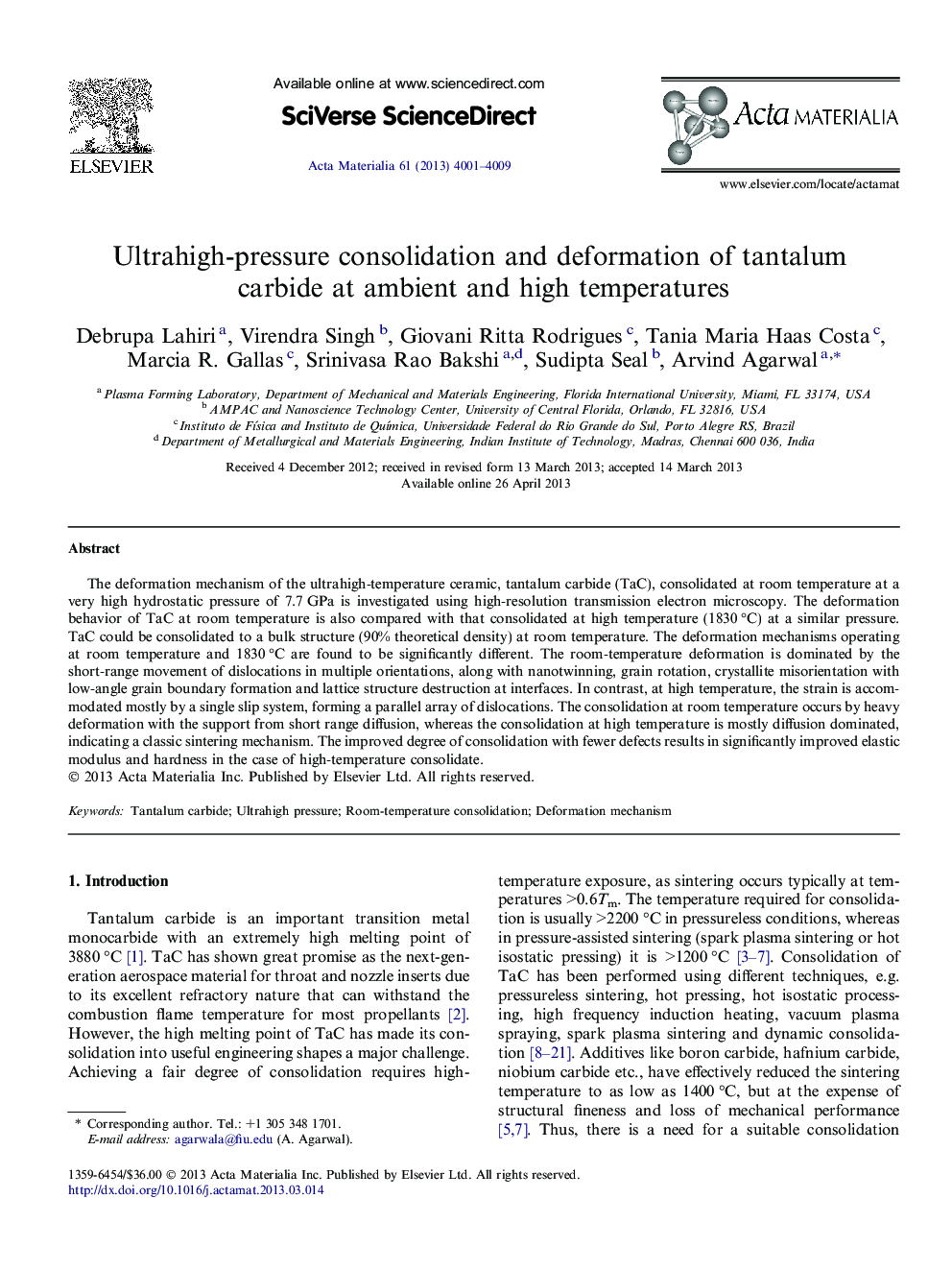| Article ID | Journal | Published Year | Pages | File Type |
|---|---|---|---|---|
| 10620147 | Acta Materialia | 2013 | 9 Pages |
Abstract
The deformation mechanism of the ultrahigh-temperature ceramic, tantalum carbide (TaC), consolidated at room temperature at a very high hydrostatic pressure of 7.7 GPa is investigated using high-resolution transmission electron microscopy. The deformation behavior of TaC at room temperature is also compared with that consolidated at high temperature (1830 °C) at a similar pressure. TaC could be consolidated to a bulk structure (90% theoretical density) at room temperature. The deformation mechanisms operating at room temperature and 1830 °C are found to be significantly different. The room-temperature deformation is dominated by the short-range movement of dislocations in multiple orientations, along with nanotwinning, grain rotation, crystallite misorientation with low-angle grain boundary formation and lattice structure destruction at interfaces. In contrast, at high temperature, the strain is accommodated mostly by a single slip system, forming a parallel array of dislocations. The consolidation at room temperature occurs by heavy deformation with the support from short range diffusion, whereas the consolidation at high temperature is mostly diffusion dominated, indicating a classic sintering mechanism. The improved degree of consolidation with fewer defects results in significantly improved elastic modulus and hardness in the case of high-temperature consolidate.
Related Topics
Physical Sciences and Engineering
Materials Science
Ceramics and Composites
Authors
Debrupa Lahiri, Virendra Singh, Giovani Ritta Rodrigues, Tania Maria Haas Costa, Marcia R. Gallas, Srinivasa Rao Bakshi, Sudipta Seal, Arvind Agarwal,
